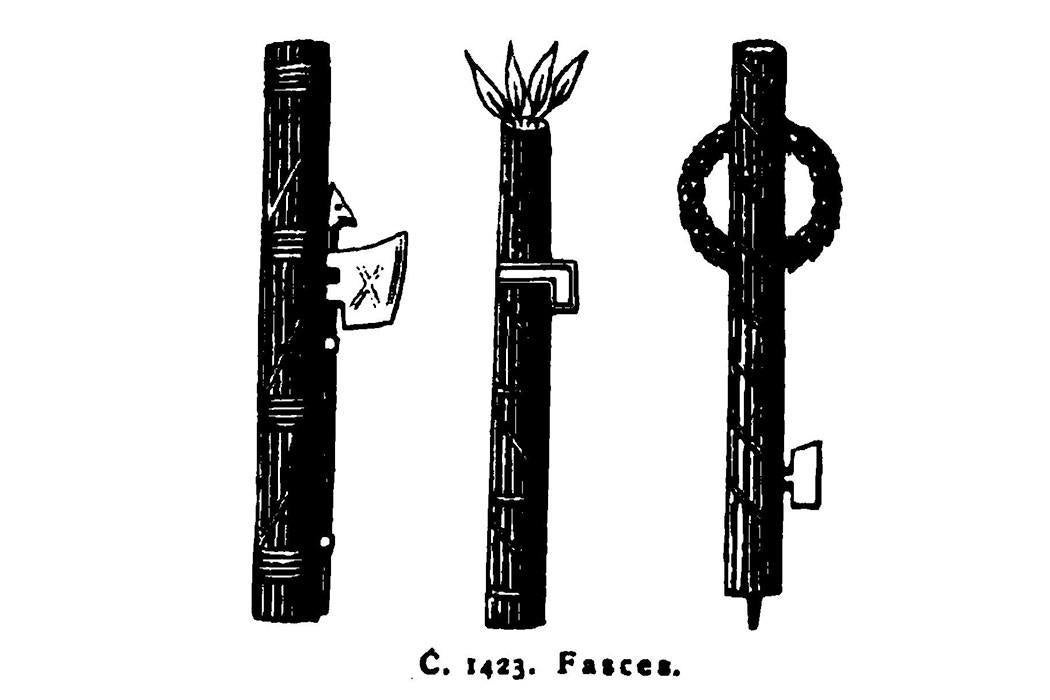What is fascism? You might think you know it when you see it, but a generic definition of this 20th century-born totalitarianism is actually difficult to pin down. Its manifestations under the Italian Fascists, the German Nazis, the Spanish Falange, the French Action Française, the Romanian Iron Guard, and others, have been varied and contradictory.
There is no single doctrinal source for fascism, in the way that Marxism laid the foundation for Soviet communism. This may be why the word is so indiscriminately used, especially in its adjectival form; George Orwell once complained that “fascist” had become nothing more than a synonym for “bully.”
“Fascism” is actually from the Italian fascismo, which stems from the Latin fasces, a bundle of sticks or rods. Benito Mussolini and his Partito Nazionale Fascista adopted the old Roman symbol of civic authority—the bundled rods with an axe attached—as their symbol, which was supposed to represent the idea of strength through unity.
Roger Griffin, who has written several books on the subject, surveys the fascist studies scene in the Journal of Contemporary History. Since the end of World War II, political scientists and historians have struggled to get at “‘the’ fascist minimum” that characterizes all fascisms.
The immediate post-war reading of fascism was of an “ideology of nihilistic irrationalism, a movement fueled by pathological barbarism.” Marxists on the other hand viewed fascism from the 1930s on as an end-stage of capitalism, a corporate-state reaction. More recent liberal academic theories of fascism have defined it as: authoritarian nationalism; reactionary mass movement; revolutionary ultra-nationalism; synthesis of right-wing and left-wing characteristics; mobilizing myth of national rebirth.
Griffin notes the failure of contemporary opposition to fascism to understand the “genuine affective hold which the prospect of revolutionary change” promised by Mussolini and Hitler “came to exert on the imagination, emotions, and hopes for the future.” For the many people who were disaffected, disorientated, and brutalized by the economic collapse of the 1920s and 1930s, fascism promised a cultural revolution—but of course resulted in mass murder and world war.
Weekly Newsletter
This leads directly to Griffin’s argument about the consensus of “the primacy of culture” in fascist studies today. Fascism’s appeal in this view is primarily a cultural one, not political nor economic. After all, it isn’t ranting demagogues themselves who are dangerous, it’s the chord they strike among so many excited about transforming the conditions of their lives. Historically, people turned to fascism, says Griffin, paraphrasing an earlier historian, because it offered to restore “a sense of belonging and rejuvenating the life of the spirit, thereby bringing about the moral rebirth of society.” That fascism never turned out that way may be beside the point.







